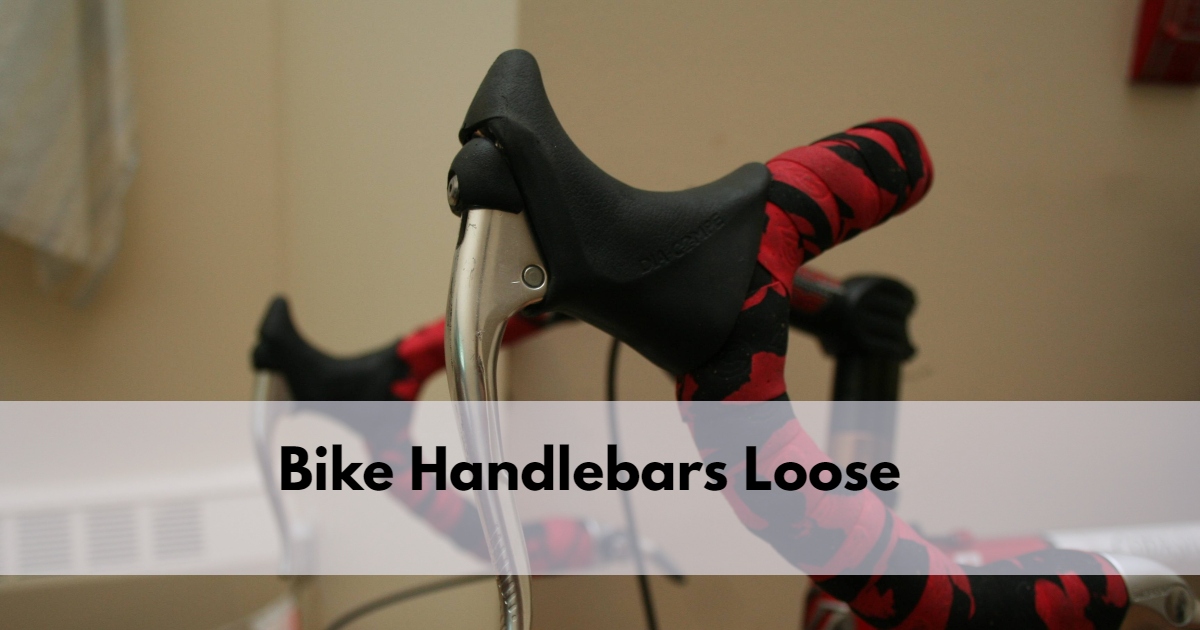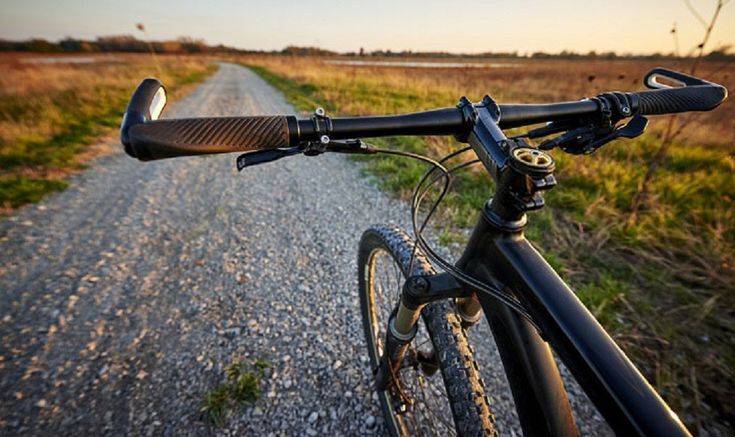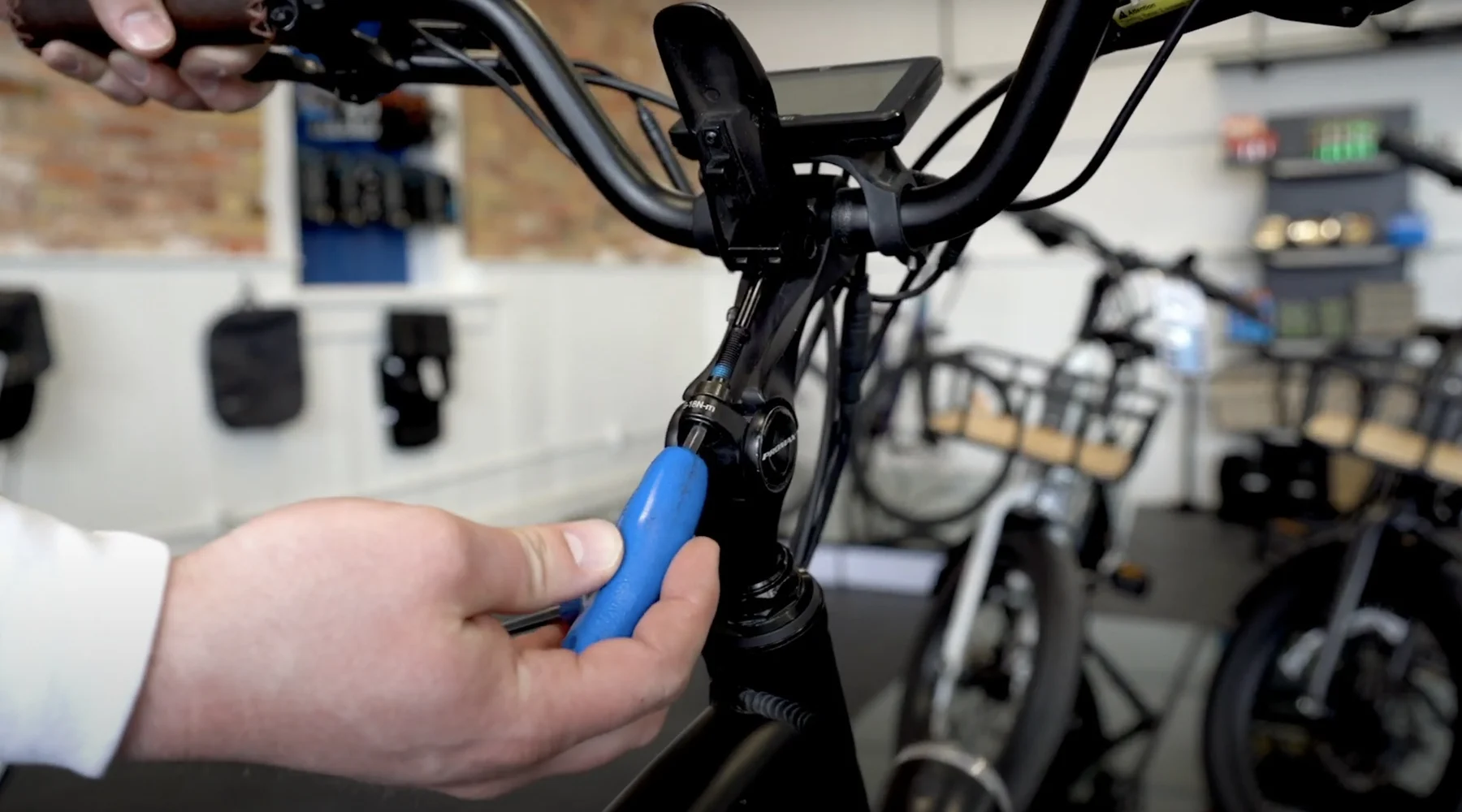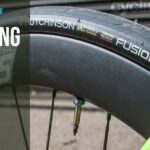Experiencing wobbly bike handlebars is not just unsettling; it’s a serious safety hazard. Loose handlebars undermine your control over the bike, posing a risk of accidents and crashes. Typically, this issue stems from wear and tear or, in some cases, direct impact from a crash. The loosening of bolts or stem damage are common culprits. Recognizing and addressing loose bike handlebars promptly is super important for your safety.
Identifying Loose Bike Handlebars
To ensure safe and comfortable cycling, it’s super important to identify and fix loose bike handlebars. Here are methods to determine if your bike handlebars are loose:
- Look for Gaps: Inspect for any gaps between the handlebars and the stem, or between the stem and the steerer tube. Gaps are a clear sign of looseness.
- Check for Movement: Gently move the handlebars back and forth, and side to side. If they shift without resistance, they are likely loose.
- Listen for Noises: Pay attention to any unusual clunking or rattling noises while riding. These sounds can indicate loose handlebars.
Detailed Step-by-Step Guide
For a more thorough assessment, follow this step-by-step guide:
- Engage the Front Brake: This immobilizes the front wheel, allowing for a more accurate assessment.
- Rock the Bike: Gently rock the bike back and forth while observing the handlebars. If they move separately from the stem, they are not securely fastened.
- Twist the Handlebars: Try twisting them. Easy twisting is a sign of looseness.
- Inspect Stem Bolts: Examine all stem bolts to ensure they are tight. Loose bolts can be tightened with an Allen wrench.
- Check Headset Bearings: These bearings enable the handlebars to turn smoothly. To check, hold the fork and move it back and forth. Any play in these bearings indicates a need for tightening.
How to Fix Loose Bike Handlebars
1. Gather Your Tools: Repairing loose handlebars is relatively straightforward, requiring basic tools. You’ll need:
- Allen wrench set
- Screwdriver
- Pliers
- Grease
2. Loosening the Bolts: Start by loosening the bolts that attach the handlebars to the stem. This is super important to adjust or inspect the handlebars properly.
3. Handlebar Removal: Carefully remove the handlebars from the stem for a thorough inspection.
4. Inspect and Replace the Stem if Necessary: Examine the stem for any signs of damage. Replace it immediately if it’s bent, cracked, or shows significant wear. A damaged stem cannot reliably hold the handlebars in place and poses a safety risk.
5. Applying Grease: Before reattaching the handlebars, apply a thin layer of grease to the stem. This helps in smooth reattachment and prevents corrosion.
6. Reattach the Handlebars: Place the handlebars back onto the stem. Ensure they are aligned correctly for your comfort and safety.
7. Tighten the Bolts: Finally, tighten the bolts. They should be snug, but be careful not to overtighten as this can cause damage to the threads or the handlebars themselves. Use an Allen wrench for precise tightening.
Preventing Loose Bike Handlebars
Prevention is always better than cure, especially when it comes to bike maintenance. Here are some tips to prevent your bike handlebars from loosening:
1. Regular Bolt Checks: Make it a habit to check the tightness of the handlebar bolts regularly. This simple step can prevent the majority of looseness issues.
2. Stem Inspection: Keep an eye on the condition of the stem. Replace it if you notice any signs of damage or excessive wear.
3. Avoid Crashes: This might sound obvious, but avoiding crashes not only ensures your safety but also protects your bike from various damages, including loose handlebars.
4. Consider a Handlebar Stabilizer: For those who often ride on rough terrain, a handlebar stabilizer can provide extra support and reduce the risk of loosening.
Conclusion
Dealing with loose bike handlebars is a common issue for cyclists but addressing it promptly ensures your rides are safe and enjoyable. Regular maintenance, including bolt checks and stem inspections, can prevent most problems. Remember, if you’re ever in doubt about your ability to safely repair your bike, it’s always best to consult a professional. For more tips and bike maintenance advice, visit our homepage at Refried Cycles.









